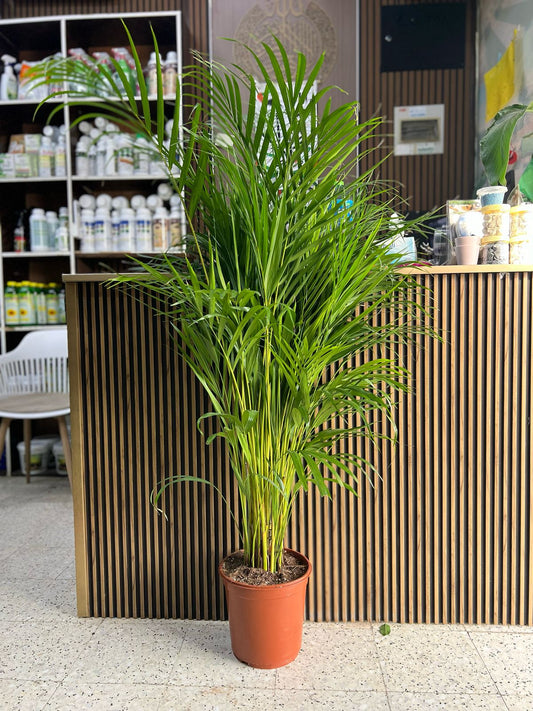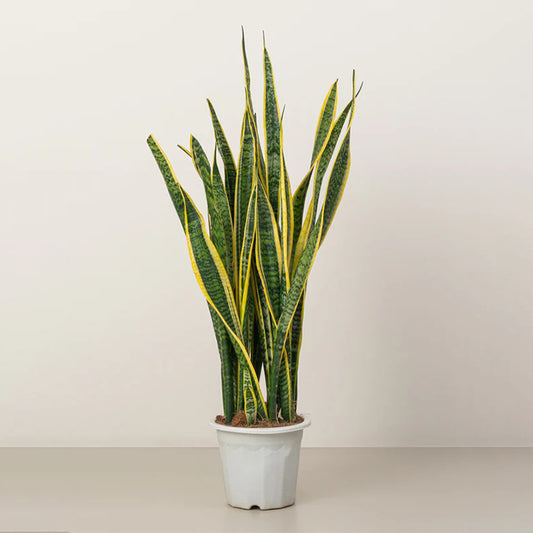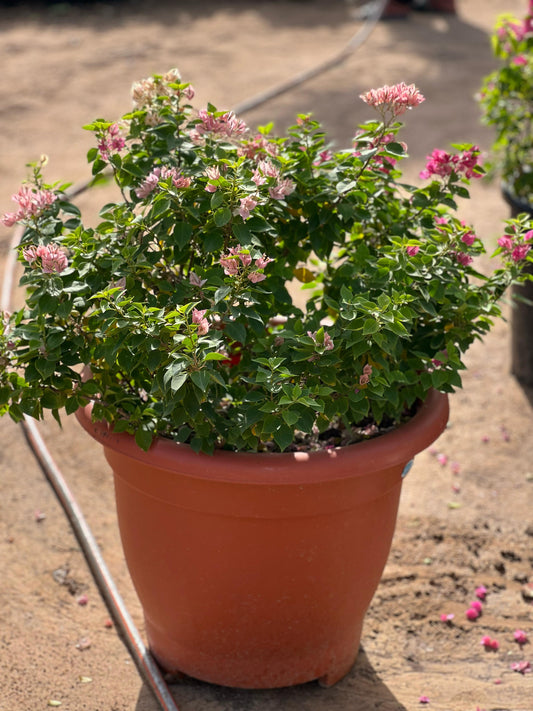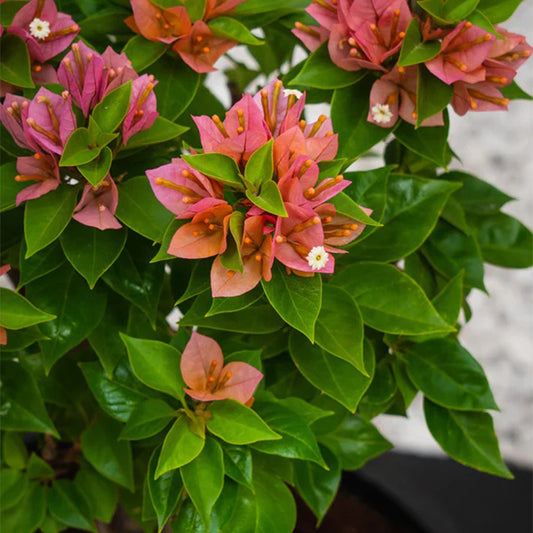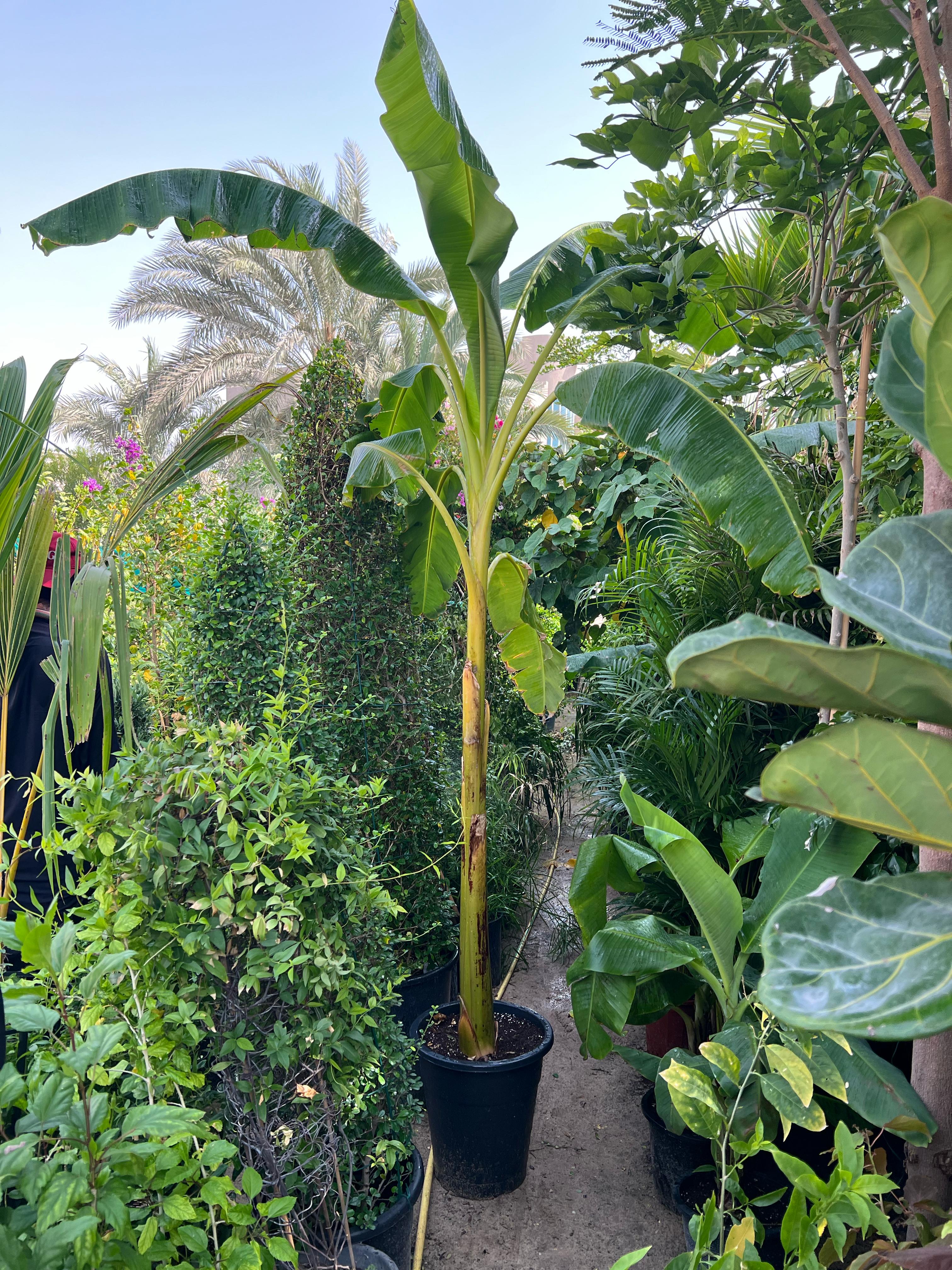
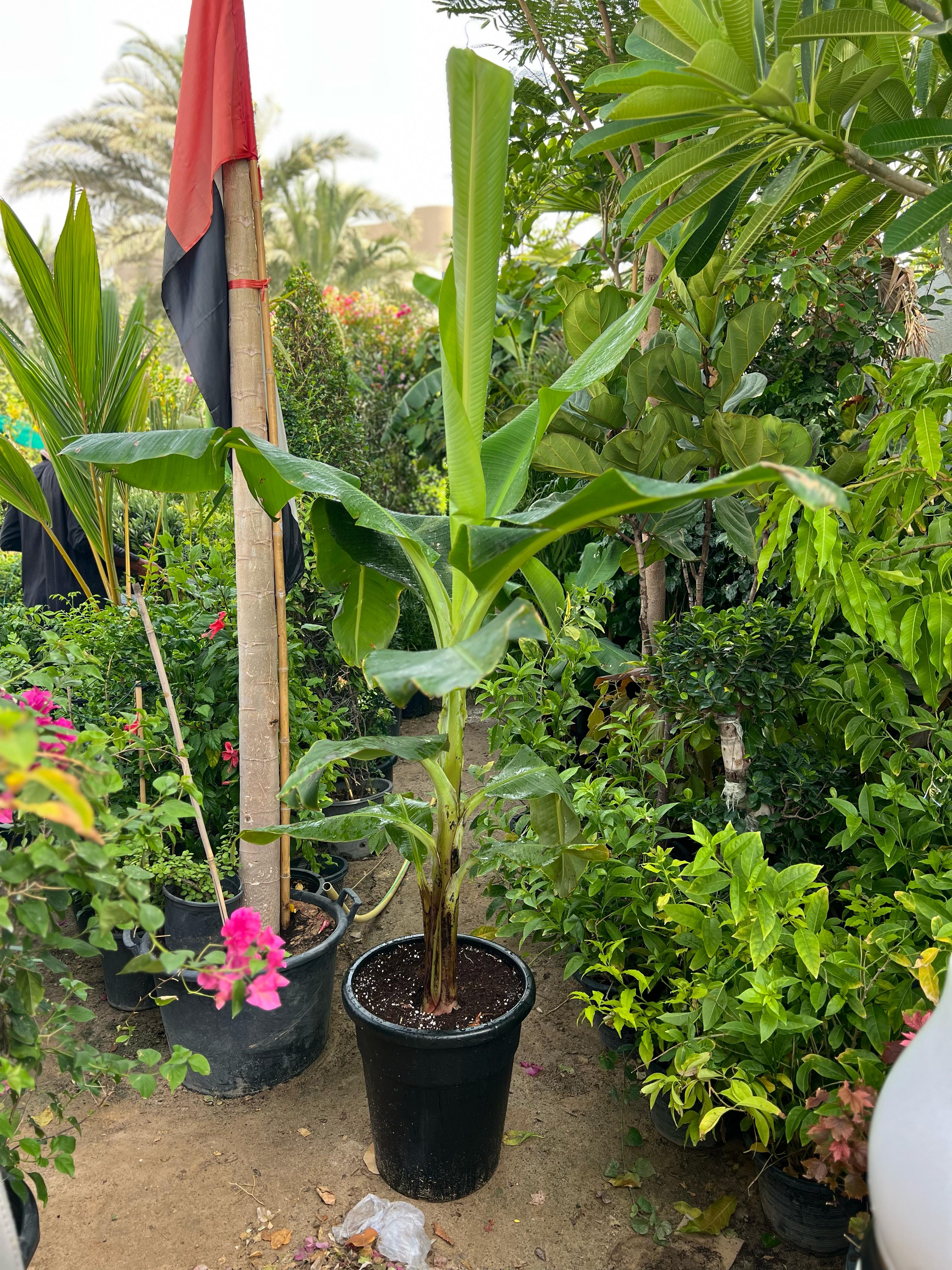
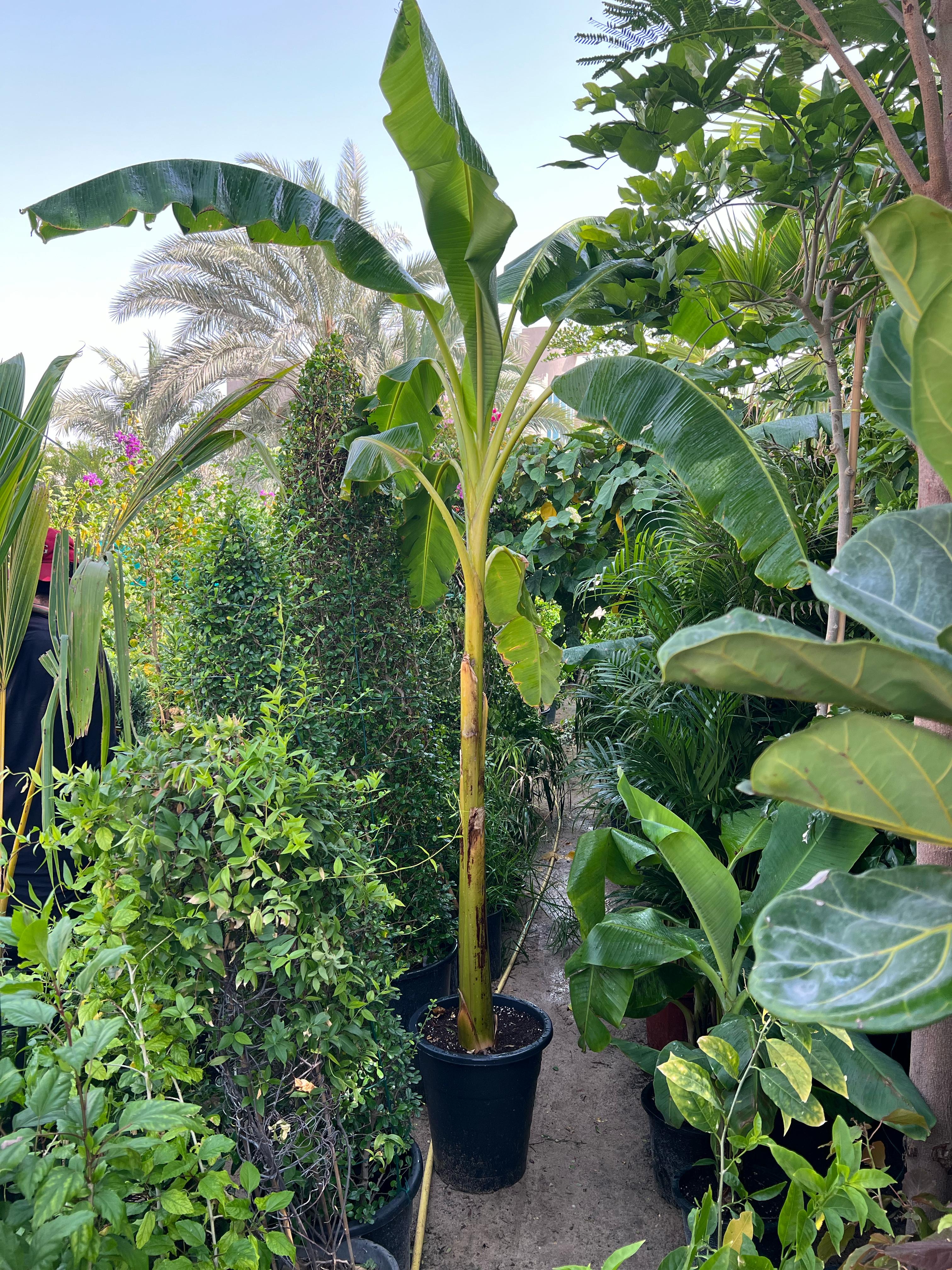

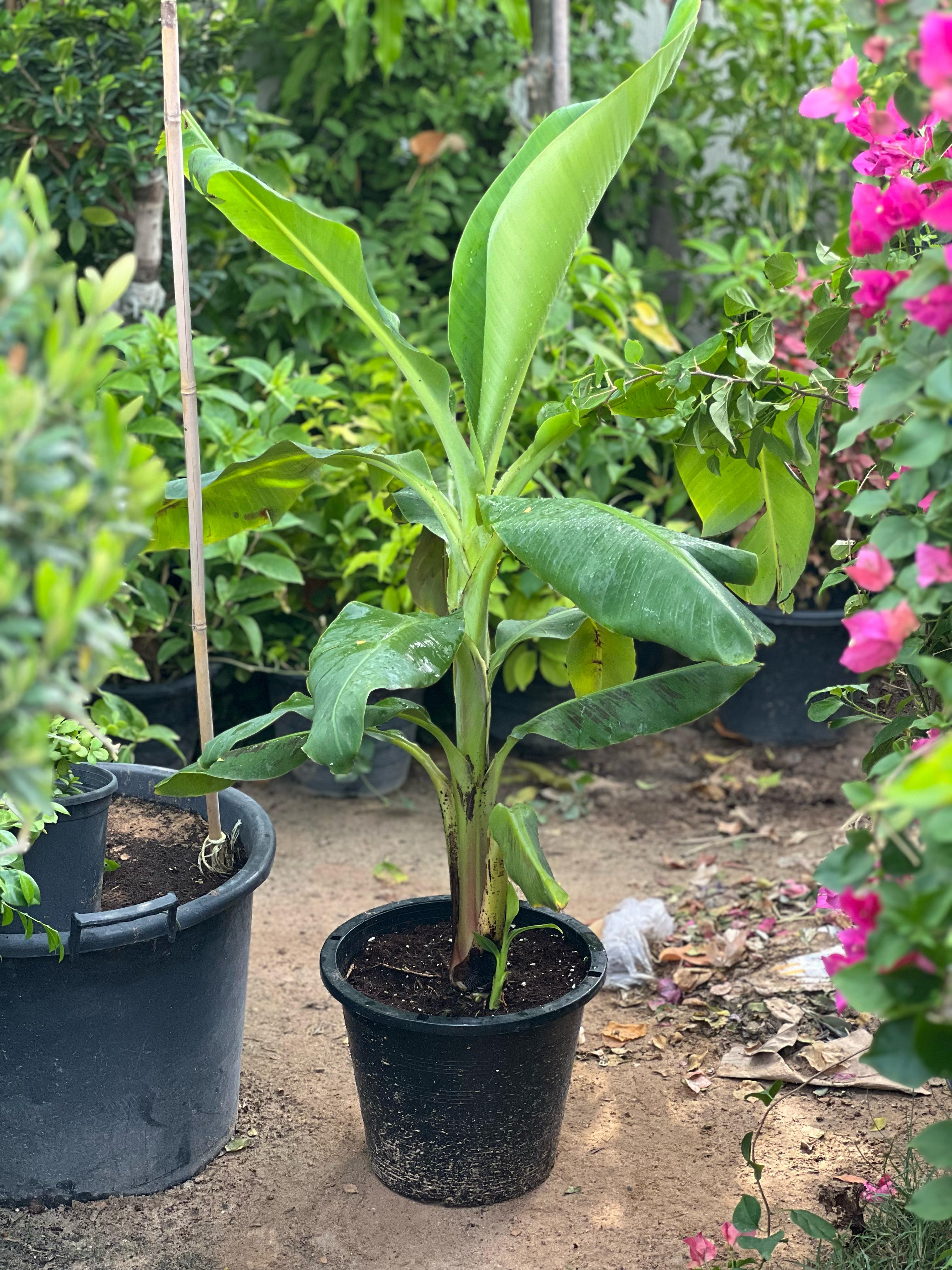
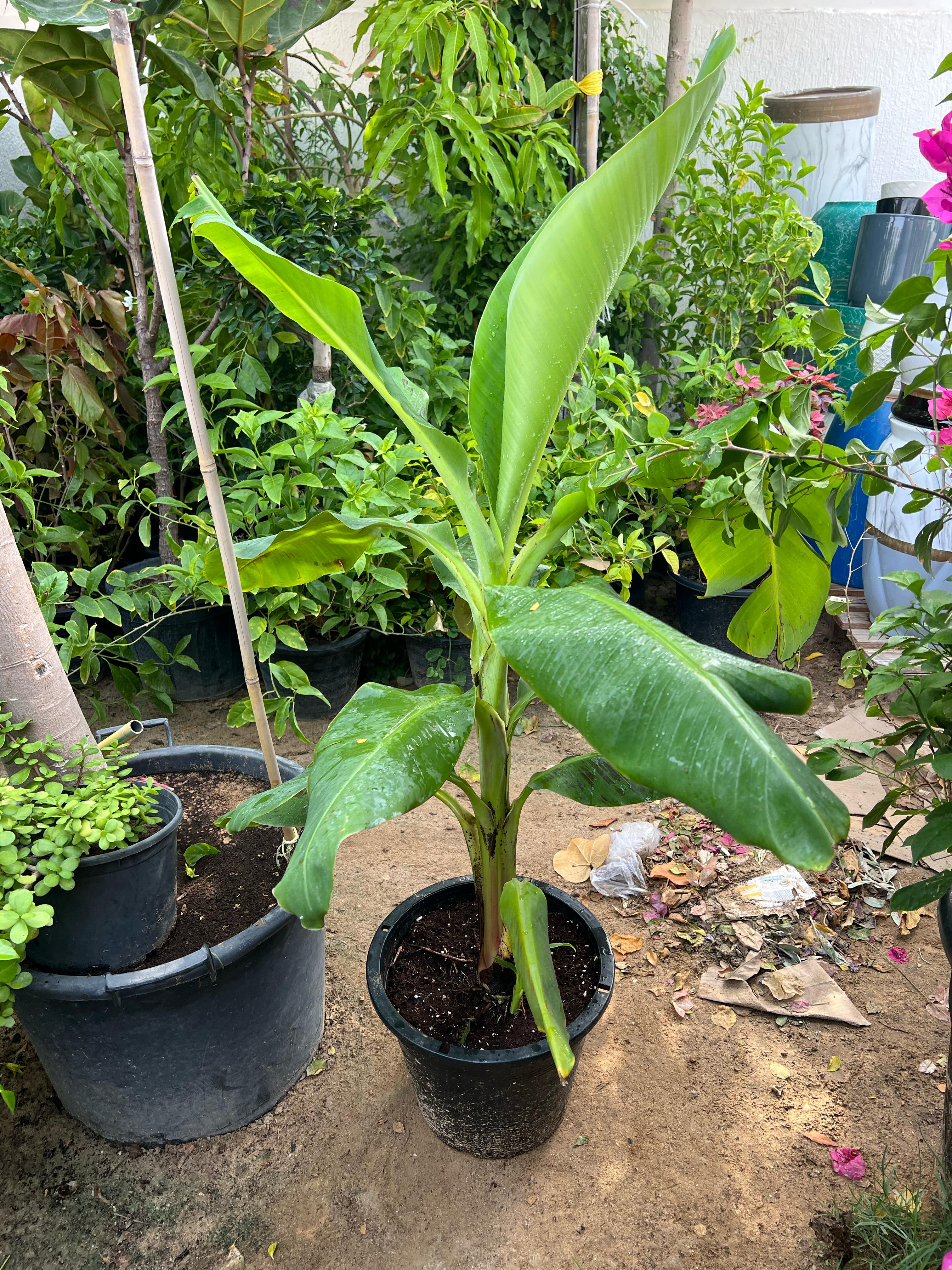

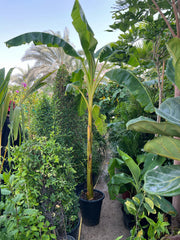
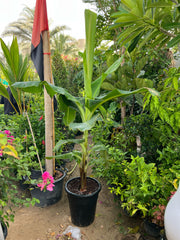


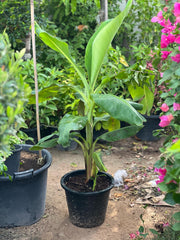
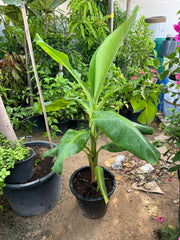

Description
xThe banana plant, scientifically known as Musa Paradisiaca, is a perennial herbaceous plant that belongs to the Musaceae family. It is native to Southeast Asia and is widely cultivated in tropical regions around the world. The plant can grow up to 2.5 meters in height, but some varieties can be as short as 100cm.
The banana plant has a thick, fleshy stem that is composed of overlapping leaf sheaths. The leaves are large, elongated, and have a deep green color. The plant produces a large inflorescence that contains clusters of flowers that develop into fruit.
The fruit is a berry that is elongated and curved, with a yellow or green skin that is often covered in brown spots. Banana plants are propagated through suckers, which are small shoots that grow from the base of the plant. They require warm temperatures, high humidity, and well-drained soil to thrive. The plant is a heavy feeder and requires regular fertilization.
- Choosing a selection results in a full page refresh.



